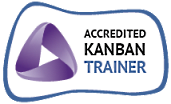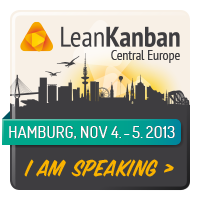Hi Alexei,
I hope you’re doing well. I was thinking of you because we have a client in [location] and they have a 6-month opening for an Agile coach. Would you be available to start February 15?
Regards,
[Name withheld]
I have many similar messages in my email archive.
You may be a consultant or a contractor who receives such messages, a recruiter who sends them. You may know or work for or with someone who is. You may be a manager or executive in a company that decided to invest in Agile and engage an Agile consulting firm. This decision led to the creation of one or more such “openings.”
I want you to see the dollar signs in this message.
Most such six-month contracts involve on-site presence four or five days a week; sometimes three, but rarely. The typical batch size is between 90 and 120 billable days. Daily and hourly pay rates vary, but within a range. If you’ve ever received, sent or caused someone to send such a message you know what it is. The consulting firms’ markups can range from 20% to over 50%. Travel expense allowances are sometimes generous dollar amounts, sometimes not so generous, sometimes a percentage of fees and sometimes not offered at all.
What’s the total? Low six figures. Certainly over $100,000 and in some cases over $200,000. Some transfer of expertise (in this case, Agile) is taking place and this is the atomic unit of commitment and delivery to the client.
Let’s save for another day the incongruity of using six-month batches worth over $100,000 to teach people to deliver results to their own customers in small increments every two weeks. We should still ask questions, such as: is this the right price to pay for the benefits? Are client companies taking appropriate levels of risk? Is this delivery business model sustainable? Is there a better way?
David J Anderson, the Pioneer of the Kanban method, wrote earlier this week: Is Agile Costing You Too Much? I strongly recommend reading his article before returning to the rest of this post. (Spoiler: his answer is an emphatic “yes”, highlighting the key differences between Kanban and Agile, and illustrating the point with many real-world stories.)
I’m offering several such stories of my own in this post. I was involved in them directly. They support the same conclusions.
Story #1, a video software company, over 500 employees at the start, increasing by 20% in one year. Quality was a significant problem at the start. They expressed it anecdotally and it also showed up quantitatively in our demand analysis exercises early on. (Demand analysis is one of the Kanban techniques we teach in the foundational KMP I – Kanban System Design class, part of the Lean Kanban University curriculum.) Said the CEO one year later:
“Kanban didn’t solve our quality problems. It consistently led us to better decisions, which, in turn, led to improvements in quality.”
The Kanban initiative involved not only the software engineering department. The impact was company-wide. Finance, sales engineering, training, HR, marketing, you name it. Their director of training created the first organizational feedback loop with Kanban. When asked to name their the most impactful Kanban implementations during one of my visits, the executives started with the Accounting department. The total number of employees receiving some form of Lean Kanban training was about 100. It may seem like a small number (less than 20%), but Kanban training is not about imparting knowledge and teaching every team member various practices. It is management training for those making decisions in their business and it is designed to help them think and act in new, pragmatic ways.
Twenty-seven people (about 5% of the company) received training up to the Kanban Management Professional (KMP) credential level. This number included the CEO, the CFO, the VP of Engineering, the manager of every key department and several experienced technical specialists. I’ll save the KMP credential discussion for another day. It will suffice to say today, all Lean Kanban University credentials have a story and signify something. A short KMP story goes like this: if you are a leader of an organization of several hundred and two dozen KMPs work for you, you’ve got a great chance to run a modern, adaptive, resilient business.
How much did this cost? Four consultants were involved. Don Reinertsen and David Anderson paid one short visit each and the rest was done by me and Dave While in a series of short visits, totaling about 25 billable days. The per-hour cost to the client was certainly more than the number you’d hear or give a recruiter looking to fill an six-month Agile coaching contract. But what was the total? How did it compare to one or two Agile coaching “atoms”? It may have been approximately one and was certainly less than two. If the company decided instead to invest in one Agile Coaching Atom, the effects would have been most likely confined to a small number of engineering teams adopting Agile rituals.
Story #2 – the life sciences company where Evgenia Ovchinnikova was the Operations Directory until recently. I taught her to be the company’s internal Kanban champion and only made a few visits for training and consulting and several conference calls. The company’s CEO, CFO, VP of Sales, and the director of almost every department all received the Kanban System Design (KMP I) level training. Evgenia went on to “kanbanize” about 30 different services within the company, employing over 700 people. STATIK (the systems thinking approach to introducing Kanban), which is taught as part of each Kanban System Design class, was key to designing many context-fitted systems with consistent quality. The top-level Kanban system was a Portfolio Kanban of the company’s entire product pipeline. The newly introduced Kanban systems led to substantial behaviour changes within the management ranks. This is about all I can say about this company. Details of their Kanban implementation have become a closely guarded secret as they view it as a source of their competitive advantage. We’re very happy for them!
How much did this engagement cost? Well, the money would not be enough to buy even one Atom. If the company had somehow retained an Agile coach for fewer billable days, that would have bought them coaching of a few teams through formation, chartering, kick-off and the first couple of sprints at the most.
Story #3 – now on a somewhat smaller scale. Kazakhstan is not backward as Borat would make you believe. But it is a remote country, far from the centres of methodological thought in the USA, Western Europe or even the emerging ones in India and China. Good advice is not easy to get. Natalia Li came from this place to the Lean Kanban Russia 2015 conference to present her software company’s case study. She didn’t coach multiple teams on adoption of rituals. She didn’t try to fix the teams of workers scooping red beads in a broken system. She instead designed a Kanban system, negotiated its introduction with the stakeholders, and used it to reduce the wait times and blockages in a workflow spanning four corporate departments. These systemic improvements caused throughput to double and the lead time to reduce by 40%. The first iteration of her Kanban system was designed — you guessed it — one year earlier, in 2014, in the Kanban System Design class I taught together with Askhat Urazbaev.
The investment Natalia’s employer’s risked in 2014 to get these rewards was to send her on a week-long trip to Moscow to attend a Lean Kanban conference and take the post-conference training. The registration cost about $1,500; travel expenses, take a guess. At her company’s smaller scale, tens of employees rather than hundreds, sending one person turned out to be enough. Again, service-delivery Kanban is not about teaching or coaching every team member how to perform practices and rituals. Could the Agile Borat coach one team to its first sprint retrospective on this budget?
More stories to come. The six-month contract vehicle, which I started this post with, continues to be a fact of life. I’m seeing some progress however. In the last year, I have been able to negotiate down the batch sizes, dramatically in some cases and arrange schedules that allow me to visit and deliver consultations and training to multiple clients. This has already saved clients money and made my advice more effective. But it wouldn’t have happened without actions of key individuals responsible for designing these consulting engagements. I appreciate them for their courage to think and act differently.













Pingback: Billable Hours or Days? | Connected Knowledge